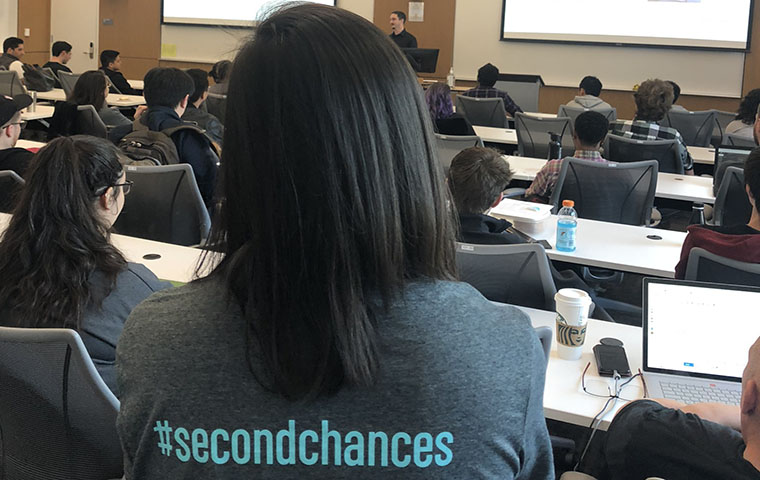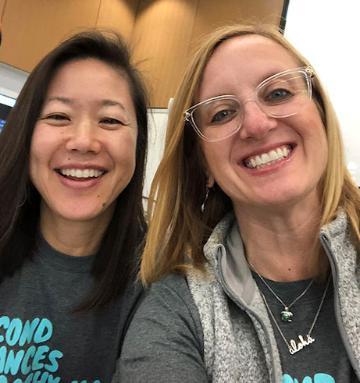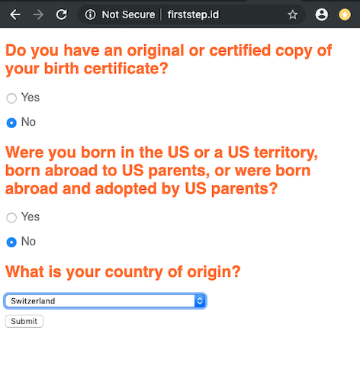
Santa Clara Law Professor Colleen Chien (pictured) started the 2nd Chances Empathy Hackathon to produce simple, easy-to-use tech solutions to issues faced by those in the criminal justice system.
When Antonio Reza JD ’22 left prison in 2012 following a stint for armed robbery, he tried to do the responsible thing and get a job. There was just one problem: a small box on every job application asking if he’d ever been convicted of a felony. “Every time I checked that box, I did not get the job,” he says. “That box also applies to housing and filling out the FAFSA to get financial aid for college.”

Antonio Reza JD ’22 knows first-hand the importance of making information more accessible to help those leaving prison get back on their feet. Photo courtesy Antonio Reza.
Speaking to Santa Clara School of Law’s second annual 2nd Chances Empathy Hackathon in late October, Reza said despite his early employment woes, he managed to defy the extremely high odds of recidivism (about 65-percent in California) and earned his associate’s at Ohlone College before transferring to USF and graduating as valedictorian last year. His felony was reduced to a misdemeanor and his record was expunged in 2018.
But for a long time he remained anxious. “Not only was I worried about being good enough, about my grades, I also had to worry about whether I’m still worthy despite what I did all those years ago.”
Reza is now a first-year law student at SCU and committed to help enact change in the criminal justice system. Navigating the system is extremely difficult to anyone without an advanced law degree, Reza says, and even then it’s tough. “For example, the law changed and felons can vote in California but no one told me…Where is that information? Where would I find out about that?” he says. “Readily available information [about a former felon’s rights] is crucial.”
Making information more accessible to the approximately 77 million Americans with a criminal record through technology was the primary goal of the hackathon, where a dozen teams paired up to find actionable solutions and develop deployable products for criminal justice nonprofits within one day.
“Second chances” refers to reforms recently passed by many states designed to help those charged or convicted with crimes shorten their sentences, or re-integrate into society by having their records cleaned or regaining the right to vote. But research by hackathon organizer and law Professor Colleen Chien shows that only a small fraction of the millions who qualify for relief have received it.

Santa Clara Law Professors Colleen Chien and Laura Norris. Photo courtesy Laura Norris.
The “empathy” in the hackathon title, according to co-organizer Professor Laura Norris, harkens to SCU’s Jesuit values. At Santa Clara, “We like to explore where the intersection is between concepts such as ethics and educating the whole person… where a particular service or research can intersect with these values. This is one of those places—the intersection of social justice and tech.”
So many people are affected by the criminal justice system—about one in three American adults has a criminal record according to the U.S. Bureau of Justice Statistics—says Chien, that there should be a shared interest in improving it. “We had two really big objectives for the hackathon. One was to get people together to work on diverse teams and work on real problems,” she says. “The other was to hack empathy—hack the barriers that separate people who are impacted by the criminal justice system and those who aren’t.”
Over 12 hours, participants including SCU students of law, engineering, and business, in addition to outside industry professionals and community members tackled tech problems presented by a dozen organizations involved in the criminal justice system. At the end of the day, teams submitted products ranging from apps to algorithms for judgement. More importantly, nearly all of the products were ready for the organizations to deploy immediately.
First place went to the web app created for #Cut50, a national, bipartisan initiative co-founded by Jessica Jackson JD ’11 aimed at reducing the prison population. The app, called FirstStep.ID, helps people just released from prison find the proper channels for obtaining official identification.

Screenshot of FirstStep.ID, a web app produced at the hackathon that directs users to the appropriate website for obtaining official ID.
Part of the group’s #FirstStepAct website that aggregates various reentry resources around the country, FirstStep.ID presents users with a simple set of questions: Do you have an original copy of your birth certificate? Is your birth certificate from the U.S.? What state ID are you applying for? And so on. Once the questionnaire is submitted, a user is redirected to the appropriate website, such as the California DMV or the embassy for Trinidad and Tobago.
“Every state is different, not all of these websites are easy to navigate,” says Zoe Rivka Panagopoulos, #Cut50 digital manager. So she tasked her team of seven, which included an SCU engineering student, a Facebook engineer, and three high school students, with compiling the necessary links to ID services. “What we’ve been hearing a lot is people need help obtaining ID. People born before 1965 who weren’t automatically granted a Social Security card upon birth; people for whom Google isn’t second nature.”
FirstStep.ID is now available as a standalone website, though eventually it will live on the revamped FirstStepAct website, which is being built by current inmates inside San Quentin State Prison north of San Francisco through a program that teaches web developing skills to prisoners.
To a former inmate, identification is crucial to reentering society. With it comes housing and educational opportunities, better jobs, access to social services, and more. Without it comes roadblocks and, worse, a fasttrack back to prison.
“Most people have nothing to their name when they’re released, and the last thing they know is how to navigate all the tech that’s changed since they’ve gone in—phone apps, websites, how to schedule a DMV appointment,” says former prisoner and #Cut50 national director Michael Mendoza. “We need to develop tech that’s not an added burden but a tool that helps people become more successful upon release.”

